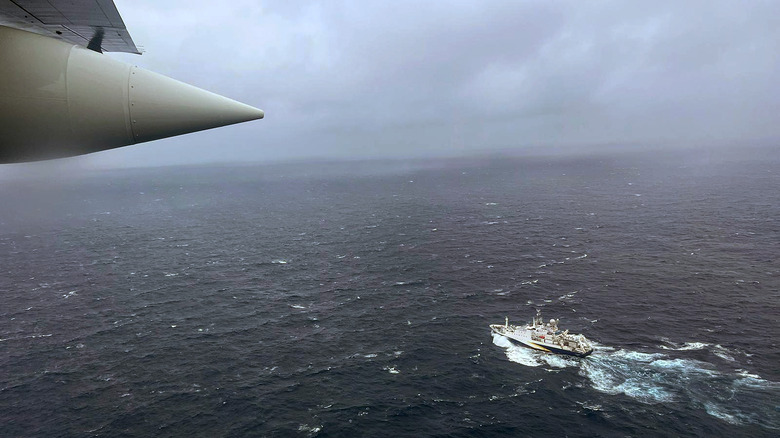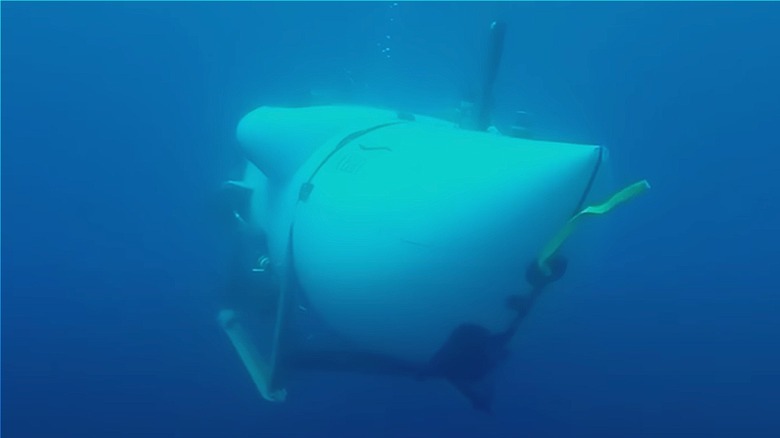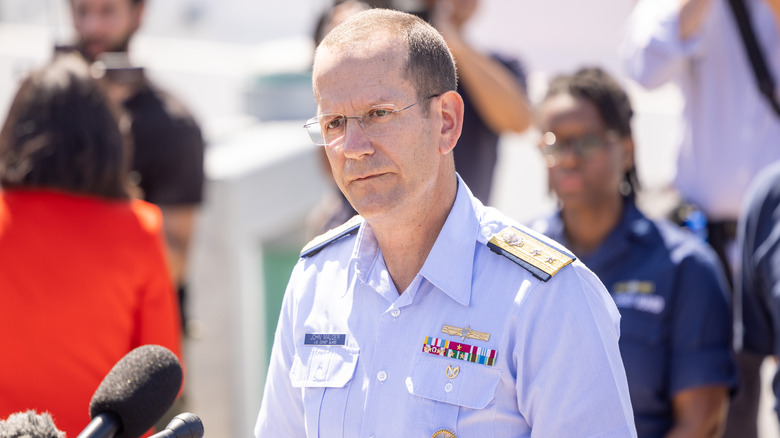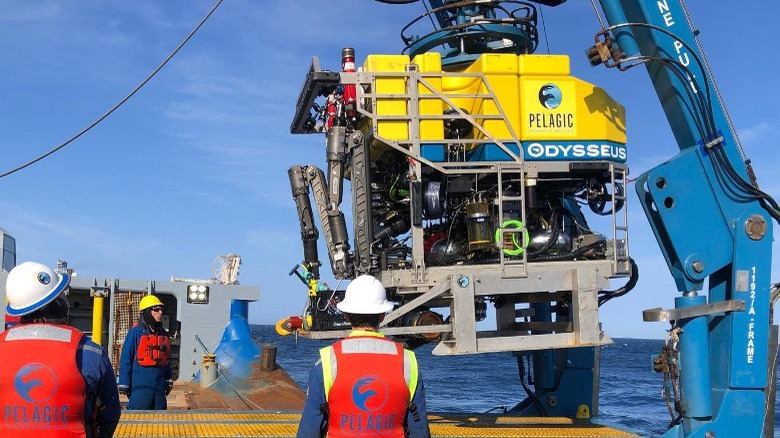What's Been Found In The Titan Sub Debris Field So Far
More than a week after the June 18, 2023 disappearance of the submersible Titan, a remotely operated vehicle (ROV) named Odysseus 6K, continues to search the North Atlantic seafloor, 12,500 feet down. The ROV first discovered the Titan's debris field four days earlier about 1,600 feet from the wreck of the RMS Titanic, which the tourist submarine with five people aboard had intended to explore, according to WBUR and CNN.
The ROV located two debris fields, a larger one where it discovered the "front end bell of the pressure hull," Paul Hankins, a director of salvage operations and ocean engineering with the Navy, said during a news conference (via CBS News). In a smaller debris field nearby, the robot found "the totality of that pressure vessel." It was this discovery that led authorities to conclude everyone aboard the sub had died in a "catastrophic implosion of the vessel." As of that moment, the massive search operation became an investigation into how the tragedy occurred and a recovery effort.
What happened?
An hour and 45 minutes after Titan began its descent into the frigid North Atlantic about 400 miles east of Nantucket, Massachusetts, all communication with its mother ship, the Polar Prince, suddenly ended, per the BBC. The sub was carrying five people, including three tourists who paid up to $250,000 each to see the wreckage of the Titanic, along with Stockton Rush, the CEO of OceanGate Expeditions, the company behind the trip, and Titanic expert Paul-Henri Nargeolet, according to NBC News.
There had been concerns from within the company and from outside experts that the Titan needed more testing and should have been certified by a professional agency, which OceanGate refused to do, according to The New York Times. Both the U.S. and Canada are conducting preliminary investigations into exactly how the disaster happened and whether there would be civil or criminal penalties regarding the accident. "My primary goal is to prevent a similar occurrence by making the necessary recommendations to advance the safety of the maritime domain worldwide," Capt. Jason Neubauer, the U.S. Coast Guard's chief investigator said at a recent press conference (via WBUR).
Coast Guard priority
The Coast Guard's current priority is recovering the debris from the bottom of the North Atlantic, which won't be easy. While the ROV has found five large pieces of the Titan, including the nose cone and front and back ends of the pressurized chamber — where the occupants would have been seated — among other pieces, Jason Neubauer, the lead Coast Guard investigator, wouldn't outright say whether they had found any bodies yet, according to Sky News and CNN.
"I'm not getting into the details of the recovery operations but we are taking all precautions on site if we are to encounter any human remains," Neubauer said during a press conference. "At this time, a priority of the investigation is to recover items from the sea floor." They have already mapped the debris fields, according to Sky News. Neubauer wouldn't say if any of the sub's pieces had been recovered as of yet, per CNN.
A robot continues its work on the seafloor
The Odysseus 6K ROV, which discovered the remains of the Titan, is equipped with both cameras and sonar and when not underwater is being housed on the Canadian ship Horizon Arctic, according to the Independent. While it is now working nearly 2.5 miles down, it can go even deeper, nearly 20,000 feet deep, and has capabilities that include "executing time-critical search, rescue, and recovery operations," according to Pelagic Research Services, the company that built the ROV.
Even so, getting the large pieces of the sub to the surface would require the help of a ship called Deep Energy, which was also part of the rescue mission turned salvage operation. The "debris will likely be too heavy for Pelagic's ROV to lift by itself," Jeff Mahoney, a spokesperson for Pelagic Research Services, told CNN. The Deep Energy is mainly used to lay deep underwater cable, according to The Guardian. The ROVs will continue their operations for another week, Mahoney told CNN. The remote location in the North Atlantic and the great depth make the recovery even harder. Mahoney, in a statement, said it was "a remarkably difficult and risky operation" (via CBS News). "Given its continuous operation under the incredible atmospheric pressures, temperatures, and environmental stresses, it's a testament to the skill of the team and the engineering of Odysseus." The cost of the operation to find and recover the Titan is expected to run into the millions just for the U.S. Coast Guard, The Scottish Sun reported.



